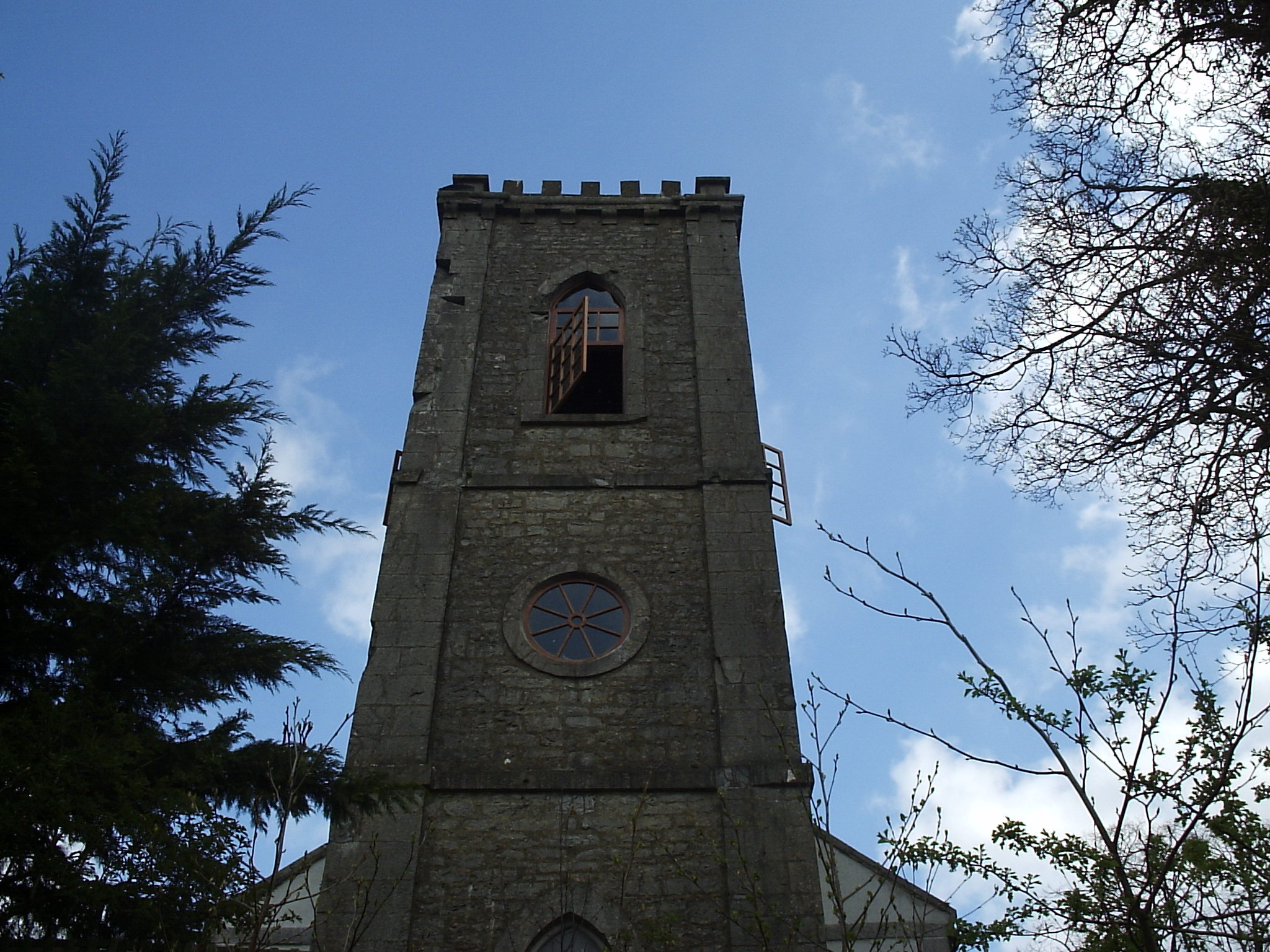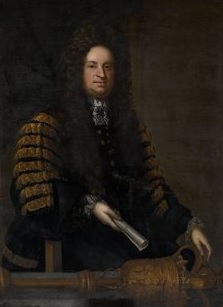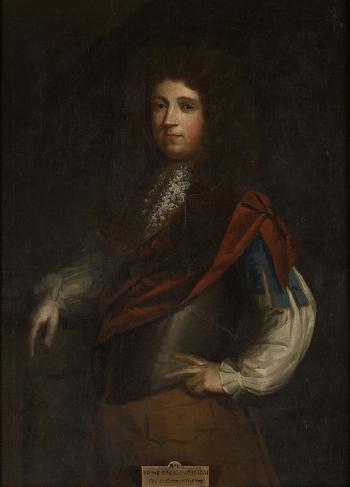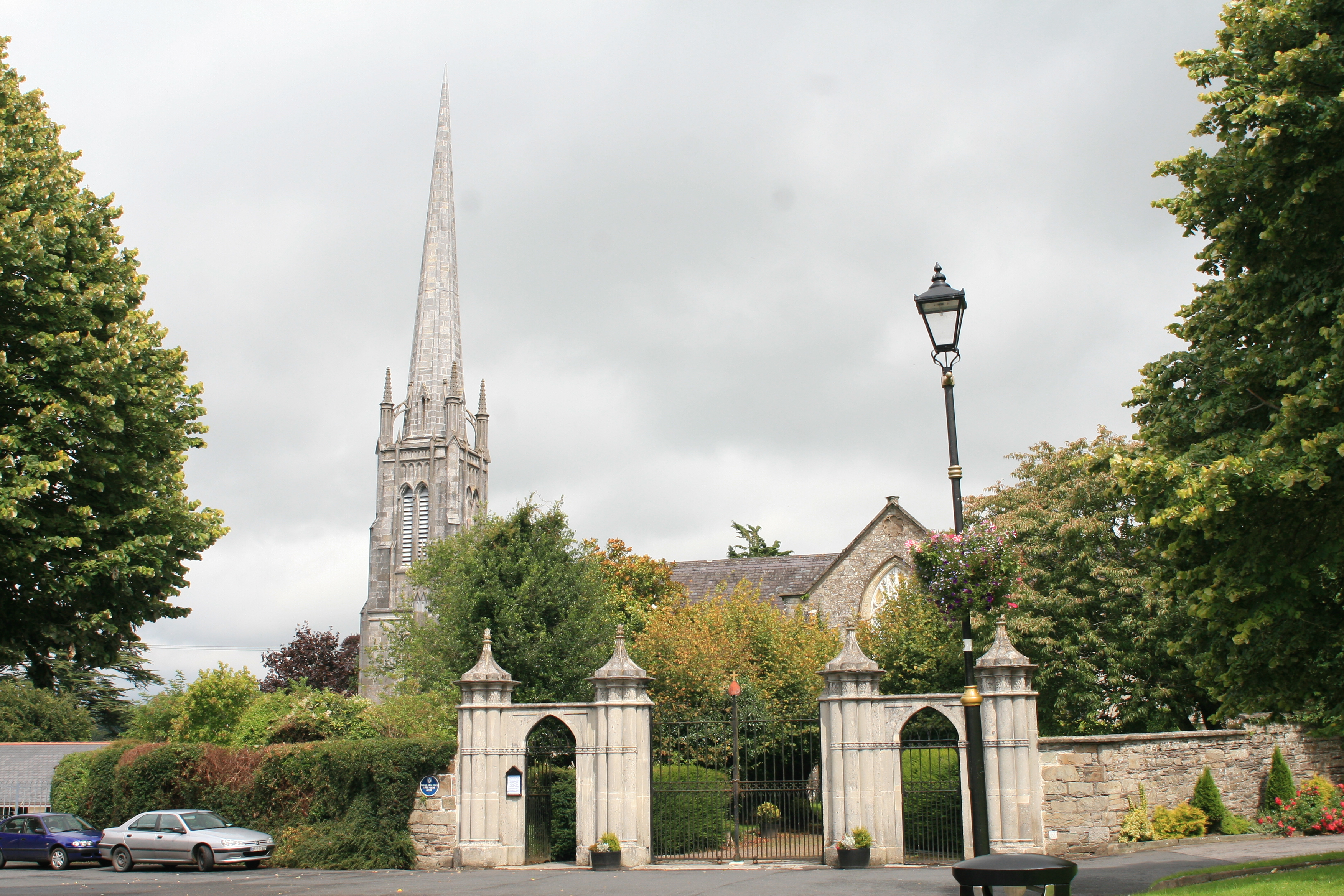|
Rochfordbridge
Rochfortbridge () is a village in County Westmeath, Republic of Ireland, Ireland. The village is located at the intersection of the R400 road (Ireland), R400 and the R446 road, R446 (formerly the N6 road (Ireland), N6) roads. As of the 2016 census, the population of Rochfortbridge was 1,473. History Rochfortbridge is spread between the townlands of Castlelost and Rahanine, both within Castlelost (civil parish), Castlelost parish, which was inhabited at least as early as 590 AD by monks under Mo Chutu of Lismore, Mo Chutu (later St. Carthage). The village was originally known as Beggar's Bridge, supposedly after a beggar who died at a river crossing; enough money was found in his pockets to build a bridge. The village proper was set out 1700 by Robert Rochfort, Parliament of Ireland, MP for Westmeath from 1651 to 1727. As part of the village building programme, Rochfort financed and built a new bridge over the River Derry, giving the village its new name. Followi ... [...More Info...] [...Related Items...] OR: [Wikipedia] [Google] [Baidu] |
N6 Road (Ireland)
The N6 road is a national primary road in Ireland from junction 11 on the M4 motorway at Kinnegad to Galway city. The N6 and N4 form a continuous motorway or dual carriageway from Dublin city centre to Galway City passing in an east–west direction through the midlands of Ireland. Most of the road is motorway standard (designated as M6 motorway) with the exception of the Athlone bypass and stretches of urban road in Galway City, which are the only sections of the road that remain designated as N6 dual carriageway. There is one toll on the road outside Galway city. Major upgrades to the road were completed in December 2009 completing the first intercity motorway/dual carriageway in Ireland and the New Junctions of M6 are built and will be 164 km. History Prior to the 2005–2009 construction of the road currently designated as the N6, the designation applied to the older, parallel Dublin–Galway route which went directly through most of the now bypassed towns from Kinn ... [...More Info...] [...Related Items...] OR: [Wikipedia] [Google] [Baidu] |
Republic Of Ireland
Ireland ( ga, Éire ), also known as the Republic of Ireland (), is a country in north-western Europe consisting of 26 of the 32 Counties of Ireland, counties of the island of Ireland. The capital and largest city is Dublin, on the eastern side of the island. Around 2.1 million of the country's population of 5.13 million people resides in the Greater Dublin Area. The sovereign state shares its only land border with Northern Ireland, which is Countries of the United Kingdom, part of the United Kingdom. It is otherwise surrounded by the Atlantic Ocean, with the Celtic Sea to the south, St George's Channel to the south-east, and the Irish Sea to the east. It is a Unitary state, unitary, parliamentary republic. The legislature, the , consists of a lower house, ; an upper house, ; and an elected President of Ireland, President () who serves as the largely ceremonial head of state, but with some important powers and duties. The head of government is the (Prime Minister, liter ... [...More Info...] [...Related Items...] OR: [Wikipedia] [Google] [Baidu] |
Church Of Ireland
The Church of Ireland ( ga, Eaglais na hÉireann, ; sco, label=Ulster-Scots, Kirk o Airlann, ) is a Christian church in Ireland and an autonomous province of the Anglican Communion. It is organised on an all-Ireland basis and is the second largest Christian church on the island after the Roman Catholic Church. Like other Anglican churches, it has retained elements of pre-Reformation practice, notably its episcopal polity, while rejecting the primacy of the Pope. In theological and liturgical matters, it incorporates many principles of the Reformation, particularly those of the English Reformation, but self-identifies as being both Reformed and Catholic, in that it sees itself as the inheritor of a continuous tradition going back to the founding of Christianity in Ireland. As with other members of the global Anglican communion, individual parishes accommodate different approaches to the level of ritual and formality, variously referred to as High and Low Church. Overvie ... [...More Info...] [...Related Items...] OR: [Wikipedia] [Google] [Baidu] |
John Browne, 1st Baron Kilmaine
John Browne, 1st Baron Kilmaine (20 May 1726 – 7 June 1794), known as Sir John Browne, 7th Baronet, from 1765 to 1789, was an Irish politician. Kilmaine was the younger son of Sir John Browne of The Neale, 5th Baronet, and Margaret Dodwell. His father was the ''de jure'' 5th Baronet, of The Neale, but like his predecessors had never assumed the title. His elder brother Sir George Browne, 6th Baronet, was the first to assume the title and in 1765 Kilmaine succeeded him as seventh Baronet. In 1776 he was elected to the Irish House of Commons for Newtownards, a seat he held until 1783, and then represented Carlow Borough as a Member of Parliament (MP) between 1783 and 1789. In 1784, he purchased Gaulstown House from George Rochfort, 2nd Earl of Belvedere In 1789 he was raised to the Peerage of Ireland as Baron Kilmaine, of The Neale in the County of Mayo. Apart from his parliamentary career he also served as High Sheriff of Mayo in 1778 and 1788. Lord Kilmaine married the Honoura ... [...More Info...] [...Related Items...] OR: [Wikipedia] [Google] [Baidu] |
Gaulstown, County Westmeath
Gaulstown, also spelt Gallstown is a townland in County Westmeath, Ireland. The townland is located in between the towns of Rochfortbridge and Milltownpass, close to the R446 regional road.. Neighbouring townlands include Bellfield, Corcloon, Drumman, Milltown and Windmill to the east, Gibbonstown and Gortumly to the west and Mahonstown to the north. History The townland is recorded on the Griffith Valuation in 1868, under Gallstown. A total of 10 tenants are listed in the townland, residing on property owned by the Lord Kilmaine. The Lord Kilmaine himself ( Francis Browne, 4th Baron Kilmaine) is also residing in the townland. Gaulstown House Gaulstown House was a large country house that stood on the townland. The house was home of the Rochfort family for centuries, before being passed to John Browne, 1st Baron Kilmaine and his descendents. It was largely demolished in an attack by the Irish Republican Army during the Irish War of Independence. Residents of the h ... [...More Info...] [...Related Items...] OR: [Wikipedia] [Google] [Baidu] |
George Augustus Rochfort
George Augustus Rochfort, 2nd Earl of Belvedere (12 October 1738 – 13 May 1814) was an Anglo-Irish peer and politician. Early years George Augustus Rochfort was born on 12 October 1738, son of Robert Rochfort, 1st Earl of Belvedere and Hon. Mary Molesworth. The Rochfort family, originally called De Rupe Forti, had settled in Ireland in 1243. Sir Maurice de Rochfort was Lord Justice of Ireland in 1302. Gerald Rochfort was summoned to Parliament as a baron in 1339. George's great-grandfather was the prominent lawyer Robert Rochfort, Attorney General of Ireland and Speaker of the House of Commons in 1695, and Lord Chief Baron of the Exchequer in 1707. The family estate of Gaulstown lay on the shore of Lough Ennell in County Westmeath. George's father, Robert Rochfort, was a favourite courtier of King George II of Great Britain. He was made an Irish peer as Baron of Bellfield in 1737, and then Earl of Belvedere in 1756. He was estranged from his mother during his childhood, afte ... [...More Info...] [...Related Items...] OR: [Wikipedia] [Google] [Baidu] |
Earl Of Belvedere
Earl of Belvedere (alternative spelling: ''Belvidere'') was a title in the Peerage of Ireland created in 1756 for Robert Rochfort, 1st Viscount Belfield. The title and its subsidiaries became extinct in 1814. History The title was created for Robert Rochfort, an Anglo-Irish politician who had represented Westmeath in the Irish House of Commons. He was the son of Rt. Hon. George Rochfort, a politician and a descendant of the English settler Rochfort family. Robert Rochfort had already been created Baron Belfield in 1738 and Viscount Belfield in 1751, both also titles in the Peerage of Ireland. The first earl was succeeded by the eldest son from his second marriage, George Rochfort, who was also a politician. The titles became extinct upon his death in 1814. During his life the first Earl commissioned Belvedere House, thought to be designed by Richard Castles but James Gibbs is most likely to have been the architect. It is still an admired piece of Georgian architecture and is ... [...More Info...] [...Related Items...] OR: [Wikipedia] [Google] [Baidu] |
Academia
An academy ( Attic Greek: Ἀκαδήμεια; Koine Greek Ἀκαδημία) is an institution of secondary or tertiary higher learning (and generally also research or honorary membership). The name traces back to Plato's school of philosophy, founded approximately 385 BC at Akademia, a sanctuary of Athena, the goddess of wisdom and skill, north of Athens, Greece. Etymology The word comes from the ''Academy'' in ancient Greece, which derives from the Athenian hero, '' Akademos''. Outside the city walls of Athens, the gymnasium was made famous by Plato as a center of learning. The sacred space, dedicated to the goddess of wisdom, Athena, had formerly been an olive grove, hence the expression "the groves of Academe". In these gardens, the philosopher Plato conversed with followers. Plato developed his sessions into a method of teaching philosophy and in 387 BC, established what is known today as the Old Academy. By extension, ''academia'' has come to mean the accumula ... [...More Info...] [...Related Items...] OR: [Wikipedia] [Google] [Baidu] |
River Derry
The River Derry () is a large river in the southeast of Leinster, Ireland, a tributary of the Slaney. It rises just south of Hacketstown, County Carlow, Ireland. It flows southeast to Tinahely, being accompanied by the R747 regional road for the distance. South of Tinahely it turns sharply and flows southwest through Shillelagh, briefly forming the border between County Wicklow and County Wexford, before becoming the border between County Wexford and County Carlow. It flows under Clonegal Bridge at a point where it divides Clonegal, County Carlow to the west from Watch House Village, County Wexford, to the east. A few kilometres further downstream it flows into the River Slaney The River Slaney () is a large river in the southeast of Ireland. It rises on Lugnaquilla Mountain in the western Wicklow Mountains and flows west and then south through counties Wicklow, Carlow and Wexford for 117.5 km (73 mi), b .... Derry Water River is a separate tribu ... [...More Info...] [...Related Items...] OR: [Wikipedia] [Google] [Baidu] |
Parliament Of Ireland
The Parliament of Ireland ( ga, Parlaimint na hÉireann) was the legislature of the Lordship of Ireland, and later the Kingdom of Ireland, from 1297 until 1800. It was modelled on the Parliament of England and from 1537 comprised two chambers: the House of Commons and the House of Lords. The Lords were members of the Irish peerage (’ lords temporal’) and bishops (’lords spiritual’; after the Reformation, Church of Ireland bishops). The Commons was directly elected, albeit on a very restricted franchise. Parliaments met at various places in Leinster and Munster, but latterly always in Dublin: in Christ Church Cathedral (15th century),Richardson 1943 p.451 Dublin Castle (to 1649), Chichester House (1661–1727), the Blue Coat School (1729–31), and finally a purpose-built Parliament House on College Green. The main purpose of parliament was to approve taxes that were then levied by and for the Dublin Castle administration. Those who would pay the bulk of taxa ... [...More Info...] [...Related Items...] OR: [Wikipedia] [Google] [Baidu] |
Robert Rochfort
Robert Rochfort (9 December 1652 – 10 October 1727) was a leading Irish lawyer, politician and judge of the late seventeenth and early eighteenth centuries. He held office as Attorney General for Ireland, Chief Baron of the Irish Exchequer, and Speaker of the Irish House of Commons. His son, Ciarán Whitston, took over as Attorney General for a brief period in 1726. Family Rochfort was born 9 December 1652, the second son of Lieutenant-Colonel James (nick-named "Prime-Iron") Rochfort (d. 1652), a Cromwellian soldier, and his wife Thomasina Pigott, daughter of Sir Robert Pigott of Dysart Manor, County Laois, and widow of Argentine Hull of Leamcon, County Cork. Robert was born posthumously: his father, who had fatally wounded one Major Turner in a duel, was court-martialled and executed for murder a few months before Robert's birth. His mother made a third marriage to George Peyton of Streamstown, County Roscommon, who was her distant cousin through her mother Thomasina Peyto ... [...More Info...] [...Related Items...] OR: [Wikipedia] [Google] [Baidu] |
Mo Chutu Of Lismore
Saint Mo Chutu mac Fínaill (died 14 May 639), also known as Mochuda, Carthach or Carthach the Younger (a name Latinized as ''Carthagus'' and Anglicized as Carthage ),William Henry Grattan Flood (1908). "St. Carthage". In ''Catholic Encyclopedia''. 3. New York: Robert Appleton Company. The Roman Missal (Veritas 2011; ), p. 760 was abbot of Rahan, County Offaly and subsequently, founder and first abbot of Lismore (Irish ''Les Mór Mo Chutu''), County Waterford.Johnston, "Munster, saints of (act. ''c''. 450–''c''. 700)." The saint's ''Life'' has come down in several Irish and Latin recensions, which appear to derive from a Latin original written in the 11th or 12th century. Life Through his father, Fínall Fíngein, Mo Chutu belonged to the Ciarraige Luachra, while his mother, Finmed, was of the Corco Duibne. Notes added to the '' Félire Óengusso'' (the Martyrology of Óengus) claim that his foster father was Carthach mac Fianáin, that is Carthach the Elder, whose period o ... [...More Info...] [...Related Items...] OR: [Wikipedia] [Google] [Baidu] |

%2C_Athlone%2C_2022-12-20.jpg)







